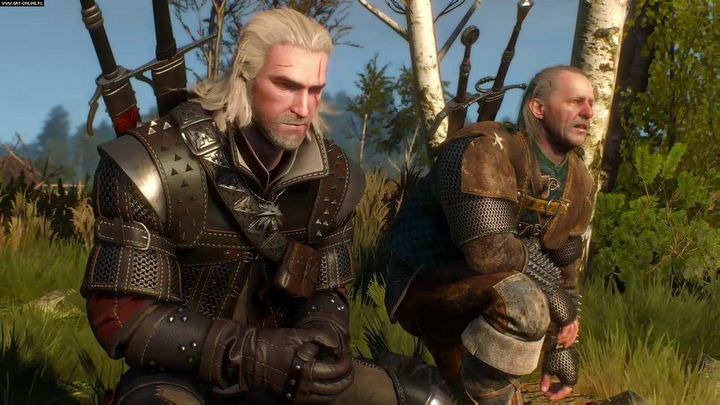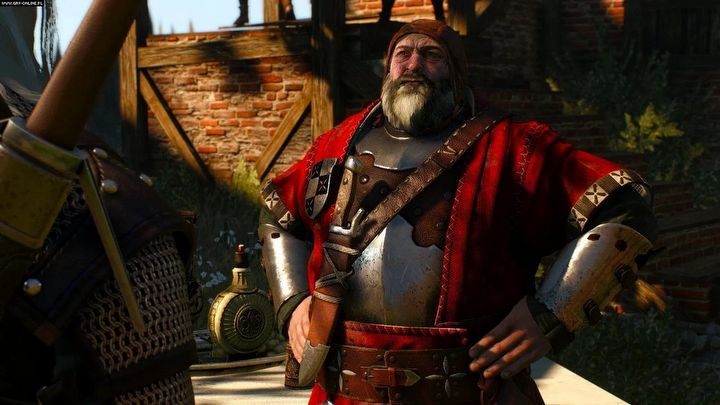Interview With Pawel Sasko About Witcher 3's Hardest Quests and Things He'd Change in Cyberpunk 2077
Which challenges from The Witcher 3 troubled CDPR most? What's Cyberpunk 2077's gravest mistake? How to craft natural game dialogues? Paweł Sasko answered these at Digital Dragons 2023.
During Digital Dragons 2023, an international game dev conference, we had the chance to meet game creators, both in informal and more formal conversations. We also attended lectures on game design and got to play some indie titles aspiring to commercial success. It was a fantastic event from which we gained many positive experiences and content for you! And here is one of them – a powerful interview with Pawel Sasko, member of CD Projekt Red, who loves interacting with players and talking about his work.
During the conversation, we touched upon many topics that are of interest to fans of The Witcher 3 and Cyberpunk 2077. We delved into the reasons behind certain narrative and design choices, as well as the intricacies of working on such lengthy projects – insights into the beloved games that have captivated the world. So, join us as we delve into the mind of Pawel Sasko and understand his approach to his creations.
WHO IS PAWEL SASKO?
He’s an employee of CD Projekt RED who has been with the company for more than 11 years. He develops quests – first as a designer, and now as director. He made quests for The Witcher 3, its expansions Blood and Wine, Hearts of Stone, Cyberpunk 2077, and now Phantom Liberty. He also regularly hosts streams where he plays Cyberpunk 2077, offering in-depth discussions about all sorts of aspects from a developer's perspective.
BEWARE OF SPOILERS!
This interview contains major spoilers, mainly from The Witcher 3, as well as from Cyberpunk 2077.
GP: Which quest are you proudest of?
Pawel Sasko: That’s a complicated question. I worked on many, but the Bloody Baron thread is probably the one I’m proudest of. I would likely place the battle for Kaer Morhen second. "Dead Man's Party" seems to be a bit of an underrated quest in my opinion, but I really like it as well. People appreciate the "Last Wish" with Yennefer, that one was mine too...
It's not surprising that the Bloody Baron's thread was mentioned, but it's cool that you brought up the others as well. Which one do you remember as the most challenging?
It was definitely the "Battle of Kaer Morhen." That's because this quest started right in the middle of the plot, and I, as a designer, had to know about everything that happened beforehand and track all the potential choices. And a lot of problems popped up along the way.
That was one of our challenges. The second thing was that we didn't really have a clear vision for this quest. Our development process works like that: we have a story outline, which is a like a general sketch. And as quest designers, we create scenarios from it. We write them relying on this outline, which, by the way, is a rather concise draft at that, often containing barely a few sentences.
And that's how things were with "Battle for Kaer Morhen." Literally. That outline was just information that the Wild Hunt was going to attack Kaer Morhen, where the witchers would be hiding with Ciri, trying to protect her from danger. And that's basically it, nothing more. So, a certain level of complication arose – in a game that's not prepared for siege stories, it required finding the right design methods to tell a siege story. And overall, it mostly went smoothly, which kind of surprised me.
The thing is I really like telling stories, changing perspectives. So there's this scene where Ciri declares she won't wait in safety as she was told to and ventures out, and the player suddenly gets the opportunity to control her. We call this a replacer. This is technically complicated, because this replacer is set up differently, we’re playing a different character. The regular avatar, Geralt, is set up on the side of code and scripts, and here we had to consider a separate character.
On top of that, there were all the storylines that came together then and there, plus all the characters. Of course, I was super ambitious about it, because not tracing the previous paths of individual characters and failing to take them into account would be a terrible blunder. For instance, I considered what was happening with Folan and Hjalmar. You can actually gather like 16 different characters in Kaer Morhen, 7 or 8 of whom are always going to be there, while the rest may or may not end up in the keep independently of each other.
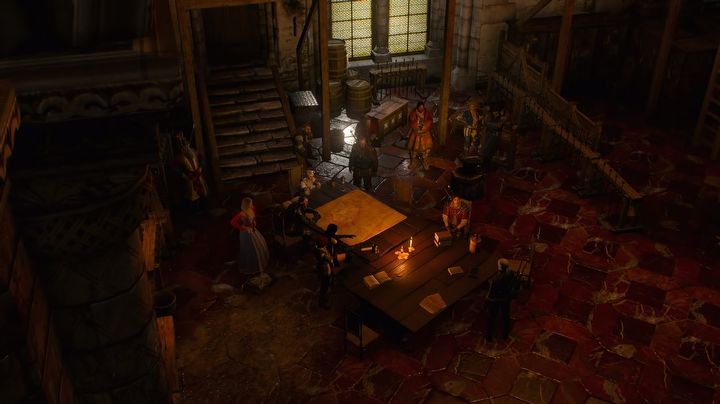
The Battle of Kaer Morhen was the most complex quest for Pawel Sasko in terms of design.The Witcher 3, CD Projekt RED, 2015
It already seemed complicated enough as it was, and then I also wanted to include interactions between specific characters. Which added another level of complication, because I had to track whether Keira Metz or Letho are there as well. And if you have Letho, do you also have Roche and Ves... For me, the conflict between Roche and Letho was more important than the beef the witchers had with Letho. So, I had to double check the dramatic priorities of this story; see which conflicts needed highlighting the most in this quest. That was really difficult!
I assume this could only be done at a stage when the threads leading up to this climax had already been mostly tied up?
Yeah, relatively. Everything was still changing anyway, because this process is always prone to changes. This is work of constant iteration. So, if earlier stages of the plot would have been changed, my entire plan for the battle of Kaer Morhen would suddenly collapse. It was absolute madness – the hardest quest I've ever done in my life. Also from the narrative perspective – because you know, this whole story arc with Vesemir, whom I had to kill... that was actually my idea.
I had a problem with anchoring Ciri in this story, I had to find a way to expose her to something so dramatic that her subsequent actions would be credible to players. It had to be a real shocker. If the events that unfolded wouldn't have this magnitude – for example, if we were just defeated and able to escape – there would be no suitable trigger for her actions. It just had to be powerful. How to achieve that? Well, make it hurt. And that would always hurt.
By the way – why Vesemir, of all people?
Because he was a very well-established character narratively, and I needed someone whose death would truly hurt Ciri. When you look at this story and its structure, the only other people were Yennefer, Triss... and maybe Zoltan? I think that's it. Lambert and Eskel weren't important enough to her. And we actually chose Vesemir by elimination. In the prologue of The Witcher 3, Vesemir is Geralt's mentor – even a father figure. And once we knew he would die, we decided we would set up an even more dramatic stage for it. We did it to make sure it would hit as hard as it could.
So, it seems that it's not the best idea to be pals with the protagonists of CD Projekt RED's games?
Jackie also didn't end up well [laughter].
Exactly! Alright, so now to something opposite – has there been a quest over the years that wasn't as polished as you would have liked? Is there one that you would do differently today?
Alright, so here's a thing: I actually believe that all the quests I can remember could have been done better. I very rarely play a quest that's already finished and have the feeling of [Pawel snaps fingers] "Oh, it's perfect, nothing else can be improved."
Are there any quests that particularly torment you?
Maybe it's less about the quests and more about the narrative structure? We discussed the so-called narrative dissonance within our team at CDPR, which is present in both The Witcher 3 and Cyberpunk 2077. In fact, we as a studio, and also the whole industry, are gradually learning how to cope with this problem, which is still common in many games. And it shows – from action titles like Tomb Raider (where it was very widely discussed) to various other games, like GTA.
In The Witcher 3, this dissonance was also pronounced. As a player, you're trying to find Ciri, but at the same time, you're playing Gwent with random gamblers. Geralt seems exceptionally chill for some reason, despite being in the process of tracking down his kidnapped daughter, whose fate is a complete unknown. And in Cyberpunk, this problem was even bigger because the clock was always ticking.
You don't know what's going to happen to you, yeah.
Exactly. This whole issue of slowly dying was a little bit overlooked by us. Based on the experience with The Witcher 3, we kind of thought we would know how to do it right, and indeed we were able to use a few methods, tricks and solutions to make it stick out a little less – but if you look deep into this structure, you can see that in Cyberpunk as well.
I'm not referring to specific quests, but the entire story arc of the game. It’s something that we're aware of and it seems completely solvable now – at a logical level, we already know how to do this better in the future.
It's just that when you manage a project that involves 500, or 1000 people, and you actually start tying up all those loose ends, it's an incredibly complex operation. When it comes to working on quests, well... I'm just finishing Cyberpunk right now, I've already spent 300 hours in it. Every time I play it, I have those feelings of "we could have done this, we could have done that." I'm playing The Witcher and I have the exact same impression. As a creator, it's really hard for me to judge something like this because I'm well aware that there's always room for improvement – no matter where you look. Even though I'm pleased with the results, I always see things that could have been done better.
Cause, you know, players always debate if we as designers even consider these things. And here we are, splitting hairs, analyzing every detail in a resolution that no one could even imagine. We think over every note, or if we talk about Cyberpunk 2077, every email, every datashard – so that it all works together. It’s a real jungle.
Finishing the subject of quests – we have one more question. Among high-budget video games, there are only a few RPGs that have very extensive choice options. The kind of games that offer decisions with a real impact on their worlds.
Thinking of, let's say, the beginning of Cyberpunk. We have these three quests and they are super short. Why is this the case in AAA games? Is it avoiding of wasting resources on things that many players will not see anyway?
You're partly right, but it's more complicated than that. When we design our games, we strive for the greatest possible replayability. That is, the potential to play a title again and again with the richest possible experience from it each time. When you look at The Witcher 2, you have a choice that simply splits the entire second act in two, and when you look at the DLC to The Witcher 3, you have a choice that either sends you to a fairy-tale land, or to that vampire in Blood and Wine. We've been doing this forever and for us, it's all about keeping the balance.

The choice between Roche and Iorweth in The Witcher 2 split the game into two completely different chapters.The Witcher 2, CD Projekt RED, 2011
It's important that the bulk of the game that each player experiences is rewarding enough to not leave anyone unsatisfied. Once we have the core, we can start thinking about potential variants – within the limitations of the budget and our sheer capabilities. As a AAA studio, we're constantly walking a fine line, trying to keep everything balanced. The idea is that this particular experience should be good enough, but on the other hand, the player should have a reason to play again. The difficult thing is that it doesn't always work out. Not to mention that many players play these games once and never return to them later. And then, there are players who don't even finish games at all.
Actually most of them do not.
Yes, of course. Most players don't finish games. In the case of both Cyberpunk 2077 and The Witcher 3, the finish rate is quite high for such long games, because people get drawn into the story. However, as a developer, you still do have the feeling that you put so much work into something that some people will never see. This is an interesting topic, we could talk about it for another two hours.
A few years ago, at GDC, Arkane talked through a similar topic in a reference to Dishonored. And these are exactly the same conclusions that we drew with The Witcher and Cyberpunk – that if the choice will be too obvious, people won't notice it. That if something is so subtle and realistic in a simple way, the choice escapes our attention.
This was our point of view, it was the direction we took with Cyberpunk 2077. We tried to make the game as authentic as possible, so that players would feel the story, the characters, the world... And what happened? The consequence of this is a situation where the player thinks: "I made a decision and it happened" – and they think this is the only path in the game. In fact, only people who watch YouTube, go on Reddit or read gaming press find out that there were other outcomes.
In The Witcher 3 there’s a mechanism for reminding you what happened. Geralt shows up and says: "When the Baron did this, this and that happened." The Witcher 3 had that, but Cyberpunk 2077 doesn't. Cyberpunk does it more discreetly.
I have a whole bunch of cases like this from Cyberpunk 2077. When in the middle of a conversation someone, regardless of V's origins, has the awareness of whether you’re a street kid, a corpo or a nomad, for example. And there occasionally is a difference of a line, two or three – sometimes there’s a new choice in a conversation available.
It's all about discretion and naturalness of the scenes – it seems that literally every other player has experienced the same thing as you. But only when you go through everything again, you start to notice the differences. And it seems to me that this is something we have to do even better – to learn how to balance signaling choices to the player. So it can be adequately coherent, but at the same time allow the player to see that they have really decided something.
You mentioned the Bloody Baron – now I have a mandatory question, but from a slightly different angle. It's a very interesting, complicated and widely appreciated story. Where do you get inspiration for writing these kinds of threads?
How about while answering this question, I will mention one more story that, surprisingly, no one ever asks about. This is a story about the spoon collector and Marlene from Blood and Wine. In order to lift the curse, Geralt must sit down with her at the table and dine. At that time, I was reading a lot about, and had a person in my environment who was suffering from them. And this quest tells their story.
And the Bloody Baron quest deals with PTSD and domestic violence. These were the topics I was thinking about. Whenever we think about stories, we look at things that are relevant for us personally as people. And we're trying to find an interesting narrative background that makes them consistent with the lore.
For instance, I know a person who went through a tragedy – a miscarriage. For her, the moment when it turned out that the Baron's wife had lost a child, the whole part of this peregrination, when he carries the Botchling to the threshold to turn it into a Lubberkin, was a powerful experience.
Through these kinds of stories, we go back to universal human experiences. Because of them, people can actually feel something. And they have the impression that the game is made for them – touches them, moves them, and in this way, in my opinion, it's best to draw inspiration from life.
Our world is incredibly polarized. We have so many conflicts and topics we could talk about. It's a boundless field. When we were designing the Bloody Baron quests – it was 2012 when I was writing this story – nothing like this could be found in games, but of course, this changed over time.
And to close the topic of Baron: can you say how long it took to have it all done? Can this be precisely defined?
It's quite difficult to define because as a quest designer, I'm responsible for many quests in the game. I had 12 main quests and few side quests to make for Witcher 3... so it's really hard to say.
Normally, working on a script takes several months – the first drafts take a week, maybe up to two weeks, but then there are iterations. The iteration itself takes several months on paper, but after that, the actual creation of a story from A to Z – for AAA games – usually takes a couple of years in total. See, I worked on this quest before launch, after the launch, during updates, and even later on in the Complete Edition of The Witcher 3. This work really never ends – it goes on and on all the time.
You mentioned earlier that you really like to change perspectives. I remember that I always appreciated Sapkowski for his wild experiments with perspective in his books. He would suddenly start a chapter showing us the events through the eyes of a guard who literally has a few moments in the book.
Are there any specific sources that you could say are your main inspiration? Movies or games? Fundamental works in the context of shaping you as a creator.
This is an incredibly extensive topic, but I will try to present it concisely. One thing that I always tell my designers is that we, as people in modern times, live in something called the remix culture. And most people think that in order to tell a spy story, for example, they have to watch all the spy movies.
In my opinion, it shouldn't be like this, because this is the essence of remix culture: as a creator, I take inspiration from something that has been created by someone else, and I transcreate something different. This is not the optimal way for me.
We should refer to the sources themselves instead. I remember reading the memoirs of a woman who worked in American intelligence and was actually a mole for Cuba in the 60s. And for over 20 years, no one realized she was a double agent. It was a genuine spy thriller! As we worked on The Witcher 3 and Cyberpunk 2077, for instance during the Bloody Baron quest, I bought a bunch of books about Slavic tribes, how they lived and functioned, and read them. I was not referring to what Andrzej Sapkowski wrote, but to the very sources he himself used to write.
Rather than using something that someone created on top of these sources?
That's exactly what I mean. We, as humans, tend to return to familiar stuff. When we want to make a heist movie, for example, instead of telling a story based on some true events, we will watch Ocean’s Eleven for inspiration. Of course you can do that, but if it’s already been done by someone, and you only build off of that, it will always be somewhat derivative.
During the development of Cyberpunk 2077, I returned to all things noir and the whole history of cyberpunk as a genre. To the books and sources that shaped him – historical and economic as well – to better understand this phenomenon. To better understand why, for example, in Cyberpunk 2020, and, to some extent, in 2077, there's so much attention devoted to Japan in the lore. And it turns out people apparently used to fear Japan's economic and cultural dominance, especially in the Anglo-Saxon regions of the world. Understanding this is incredibly important – you have to know what you're referring to. To answer your question directly: I draw inspiration from “pure” sources.
How do you feel about easter eggs in games? Do you like them?
Yeah. Actually, I recently had an internal workshop for my team in the studio, where I talked about easter eggs. They have this important function – on the one hand, we’re winking to the player, so the recipients may feel more appreciated for being observant. On the other hand, it's important that these easter eggs don't throw the story off.
For instance, there's this cool easter egg in Cyberpunk 2077 that I really like. It's a nod to Harry Potter's Platform Nine and Three Quarters. You can find a bloodstain of a corpo rat on a building, and a note there reads: "Hit here." And this is quite an interesting one because it was taken from the original, transplanted into a completely new environment and updated in a way that fits and enriches it.
There are also more direct easter eggs – elements of one game thrown into another one. I’ve got an example. This one was cool, even though I'm not a huge fan of these easter eggs – the one from The Witcher 2, where a dead assassin lies on a haystack and Geralt says: "Guess they'll never learn." This is cute and funny, but I prefer easter eggs that are a bit more consistent with the game world.
In The Witcher 3, in turn, there's a book in Dijkstra's library in the bathhouse. It’s a volume of War and Peace by Tolstoy, from a Polish publishing house to be exact. Was this deliberate?
It probably wasn't a mistake. Various teams can introduce their own easter eggs. This is actually an example of an easter egg from our team of writers. Of course, we have the entire internal process, because as you probably know, in AAA it's like... I heard that funny simile, which says that lawyers comb the thrash. Of course, it's a joke, but we have a fairly rigorous process of approving these elements.
We care about not violating rights, so we always pay close attention to this. All teams introducing their easter eggs are trying to realize their vision. So, this could not have been a mistake, because we avoid such mistakes by design.
How do you feel about the data shards, in hindsight? It seems there was a terrible lot of them in Cyberpunk, and I had the impression that they did not fit that world as simple, text-based messages. There are so many of them – did they work well? Maybe there were too many? They were rarely read, they didn't really appear in the interface...
You touched on a few aspects, because not every shard was an easter egg, right? Actually, only a fraction of them contained these. The shards allowed us to elucidate this world a bit, add some depth to it. One of the important elements of Cyberpunk 2077 is retrofuturism. And with the text shards, we tap into this element.
Of course, there's one purely production-related aspect – namely, once the game is ready and all the lines are written and recorded, it still takes quite a bit of time for a triple-A game to be released. In the meantime, everyone is working and trying to expand these things. When you can add elements to the game that are not voiced and recorded, but text-based instead, they can be easily added later on in the production. Thanks to this, you can enrich a game, make it more interesting, add a lot of things to it.
An example of this are the text messages in Cyberpunk 2077. We are able to add them quite late in the production, thereby tying the whole game together even more. Many players loved the texts from Judy or Panam and how Judy cares about V, how she jokes after she gets drunk, and how she sends you these ambiguous messages, as flirting is a big part of this thread all the time. So it seems that this is a way of implementing these things in a cool and functional way.
However, I partly see what you mean – maybe there were too many shards altogether. Maybe their implementation could have been better. We learn as a studio, too. In The Witcher we also had these notes, they were there to expand the lore as well, but they fitted better, seemed more natural.
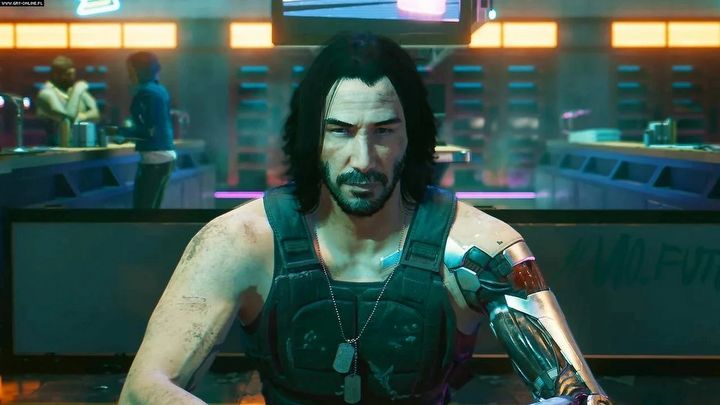
Cyberpunk 2077 could overwhelm the player with the number of shards and their sheer content.Cyberpunk 2077, CD Projekt RED, 2020
Okay, so I have a question about dialogs. The guys at the office tease me often because I think a lot of games are just too chatty. Very often the dialogues in games are artificial. We get two dolls facing each other, delivering statements, but normal people don't talk like that – they interrupt each other, there are certain dynamics of a conversation.
In Cyberpunk, many of the dialogues feel very natural. Even these little, insignificant ones. First, that's due to great immersion, which comes from the first-person perspective. Secondly, the characters move, and we can step away from a conversation.
But just why in so many games, even in The Witcher, is there such artificiality if dialogs? Is this about engine limitations? Have you only found a way to get around it in Cyberpunk? Because games with natural dialogues are often cutscene-heavy titles, in which you take away players' control over the character – gameplay becomes a movie, and you as developer can direct it however you want.
But then we get these inanimate dolls so often, and if we’re lucky, we’ll also have a few different camera angles.
Sheesh, I would like to answer this question succinctly, but I don't know how [laughter]. I'll try, though it's a terribly big topic that would take several hours of conversation. You're partly right, it is about the limitations of the engine – or rather it used to be. At least in our case.
When it comes to The Witcher 3, it worked largely on a rewritten version of RED Engine 3, sharing some elements with RED Engine 2, which was the engine for The Witcher 2: Enhanced Edition. One of the groundbreaking things we developed for The Witcher 3 in 2012 (it was revolutionary for us internally, but for you as players it seems completely normal) is the fact that characters were able to change their pose and location during a dialogue.
It really took us a long time to get it done. Merely allowing a character to walk during a scene, go to a different place, change their pose, was a very big technological challenge. This is something we did in The Witcher 3, trying to make dialogues feel more natural. But it's a matter of our development as artists to see these things. The Witcher 3 is also written differently in terms of styling. The game is constantly trying to toe the lines established by The Witcher 1 and The Witcher 2. And the books, on top of that. It constantly tries to refer to them.
There is much more styling there and the dialogues are indeed much more extensive, so partly for this reason, we added different camera angles for those moments in The Witcher 3 when players make choices. Choices appear and the camera angle suddenly changes. This makes players more engaged. Even that scene with Regis during my quest, when you meet him in Blood and Wine after his first introduction. When Dettlaff punches a hole in his chest, you head to the crypt, chat down there, and then come back up. There’s a substantial amount of movement that we have introduced to make these scenes more appealing.
And now, moving on to Cyberpunk 2077 – we tried to make everything feel "live" there. It was immediately apparent that this kind of writing would not work for The Witcher. And our writers put a tremendous amount of work into finding a new style. There were quite a few iterations, but did achieve a satisfying effect in the end. RED Engine 4, which powered Cyberpunk 2077 , assumed that characters can be freely inserted and removed from the scenes at any time. Because of this, characters can change poses, go somewhere, etc, and it all works smoothly. So you can definitely see technological and artistic progress here.
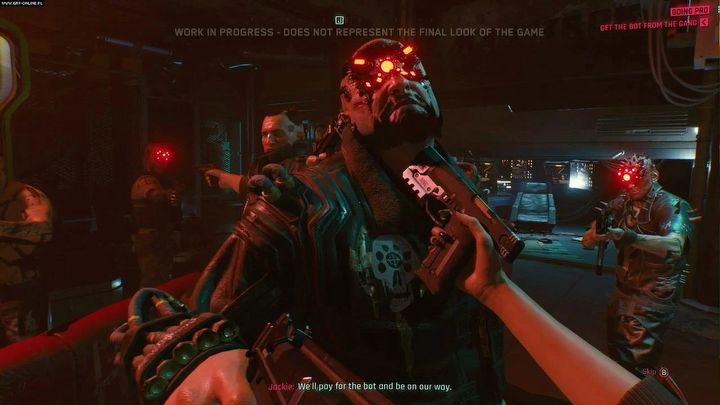
The first-person perspective in Cyberpunk 2077 enhances immersion and creates a spectacle.Cyberpunk 2077, CD Projekt RED, 2020
Why doesn't it work in other games, though? It's hard for me to say, it seems that as an industry, we have largely accustomed our audience to the idea that what you want as a player is to see a movie in the middle of a game. You don't really want to play, you just want to chat and then have a nice cinematic. And it seems to me that we've taught our audience, I especially mean in the AAA segment, that it’s just the standard.
In Cyberpunk 2077, we tried to do things a differently. You really area a part of this world – you can be there and perform at the same time. Last year, our cinematic designers gave a cool lecture at the GDC, where they talked about how V is a hero on a stage. We tried to make it so that the player was one of the actors on this stage, that they could really play a part on it.
I just remembered an amazing scene from Cyberpunk, when there's a meeting in the Afterlife and Jackie's leg is shaking like crazy. This one detail really impressed me. I thought to myself: who even came up with adding this animation? It's really easy to miss. Great stuff.
There are many such instances in Cyberpunk. And this is actually Maciej Pietras' field, he’s our lead cinematic animator. Maciej is great in noticing such things and he specializes in them. It's really funny talking with him – he can analyze every person down to their poses and gestures. In Cyberpunk 2077, there are many moments when you talk to someone and see them gazing away for a moment. We do such things intentionally, we wonder where a given character's thoughts are in the given moment. Let's assume that after Evelyn's death, Judy tells you the story and there's a moment when she looks at you and then looks away. You can see she starts planning her moves.
We always ask ourselves these questions when we're playing our reviews and we dissect our quests with our narrative director, Igor Sarzynski, and our cinematic lead, Andrzej Stopa: is this believable, how would this character act, does the character's acting work in this moment, should the expressions be more dominant, should the eyes really look like that? These details exist and these things can be done.
With all these details, it’s a lot like directing a play in a theater. As humanity, we have known theatre for thousands of years. It's just a matter of using certain tools in a completely new context, which is gaming. It seems to me that the industry is reaching a slightly higher level.
DIGITAL DRAGONS 2023
This conversation with Pawel Sasko was conducted by Adam Zechenter and Matthias Pawlikowski during Digital Dragons 2023. We thank the organizers and CD Projekt RED for enabling this interview.

